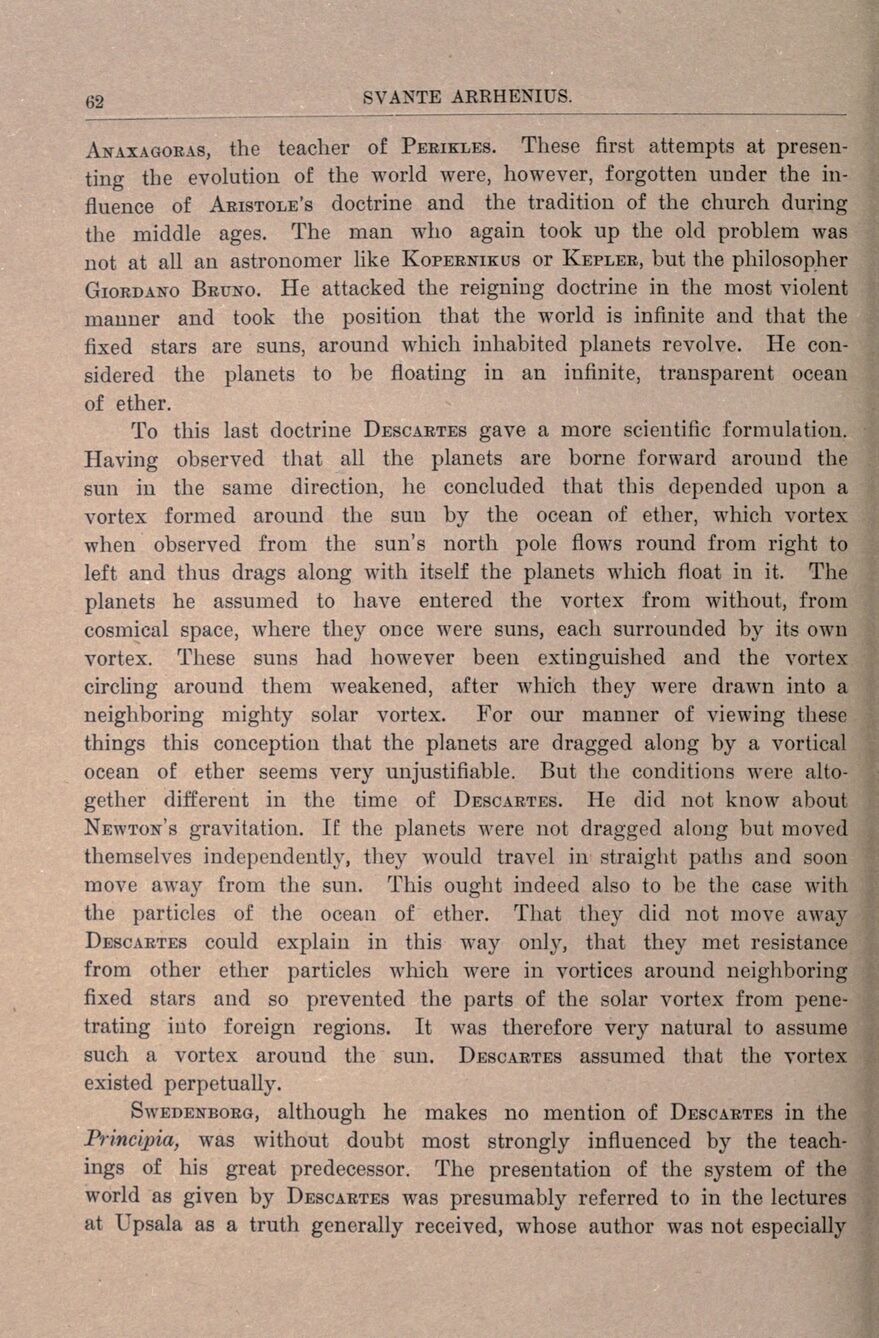
Full resolution (JPEG) - On this page / på denna sida - Sidor ...

<< prev. page << föreg. sida << >> nästa sida >> next page >>
Below is the raw OCR text
from the above scanned image.
Do you see an error? Proofread the page now!
Här nedan syns maskintolkade texten från faksimilbilden ovan.
Ser du något fel? Korrekturläs sidan nu!
This page has never been proofread. / Denna sida har aldrig korrekturlästs.
Anaxagoras, the teaclier of Perikles. Tliese first attempts at
presen-ting the evolution of the world were, however, forgotten under the
in-fluence of Aristole’s doctrine and the tradition of the church during
the middle ages. The man who again took up the old problem was
not at all an astronomer like Kopernikus or Kepler, but the philosopher
Giordano Bruno. He attacked the reigning doctrine in the most violent
manner and took the position that the world is infinite and tliat the
fixed stars are suns, around which inhabited planets revolve. He
con-sidered the planets to be floating in an infinite, transparent ocean
of ether.
To this last doctrine Descartes gave a more scientific formulation.
Having obser ved that all the planets are borne forward around the
sun in the same direction, he concluded that this depended upon a
vortex formed around the sun by the ocean of ether, which vortex
when observed from the sun’s north pole flows round from right to
left and thus drags along with itself the planets which float in it. The
planets he assumed to have entered the vortex from witliout, from
cosmical space, where tliey once were suns, eacli surrounded by its own
vortex. Tliese suns had however been extinguished and the vortex
circling around them weakened, after which they were drawn into a
neighboring mighty solar vortex. For our manner of viewing tliese
things this conception that the planets are dragged along by a vortical
ocean of ether seems very unjustifiable. But the conditions were
alto-getlier different in the time of Descartes. He did not know about
Newton’s gravitation. If the planets were not dragged along but moved
themselves independently, they would travel in straight patlis and soon
move away from the sun. This ought indeed also to be the case with
the particles of the ocean of ether. That they did not move away
Descartes could explain in this way only, that they met resistance
from other ether particles which were in vortices around neighboring
fixed stars and so prevented the parts of the solar vortex from
pene-trating into foreign regions. It was therefore very natural to assume
such a vortex around the sun. Descartes assumed tliat the vortex
existed perpetually.
Swedenborg, although he makes no mention of Descartes in the
Principia, was without doubt most strongly influenced by the
teach-ings of his great predecessor. The presentation of the system of the
world as given by Descartes was presumably referred to in the lectures
at Upsala as a truth generally received, whose author was not especially
<< prev. page << föreg. sida << >> nästa sida >> next page >>